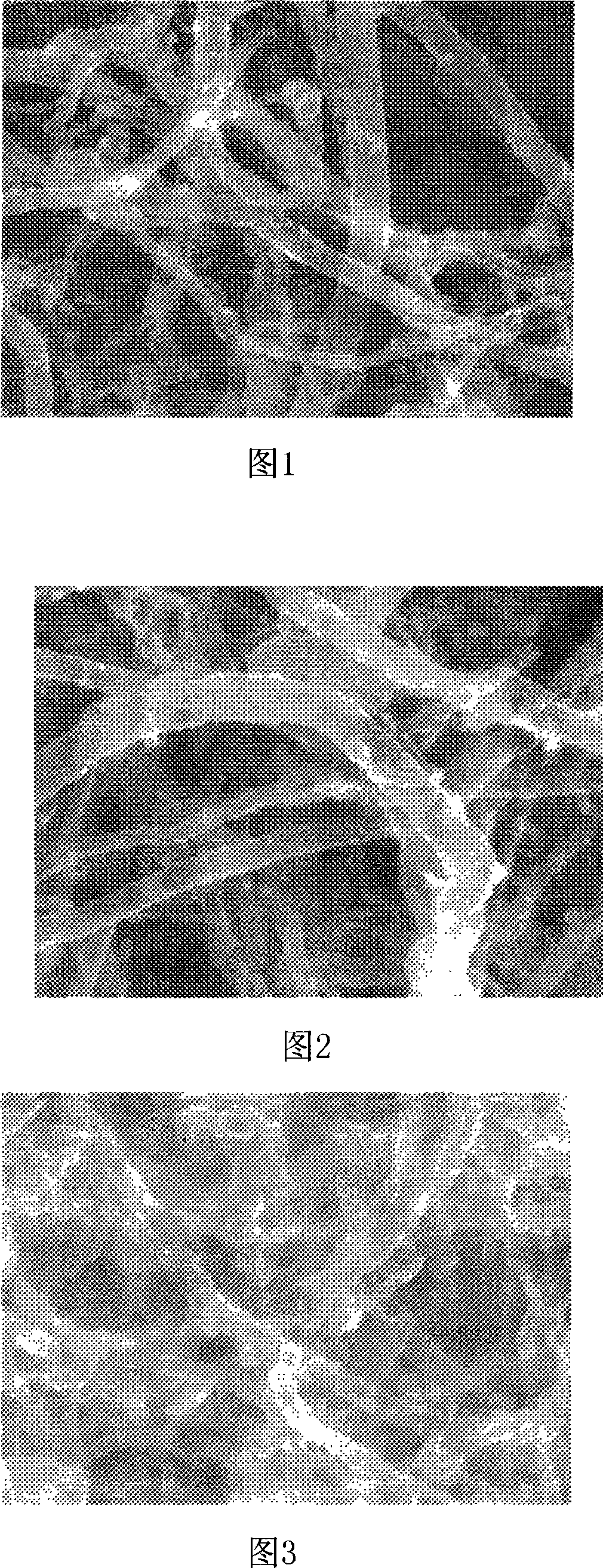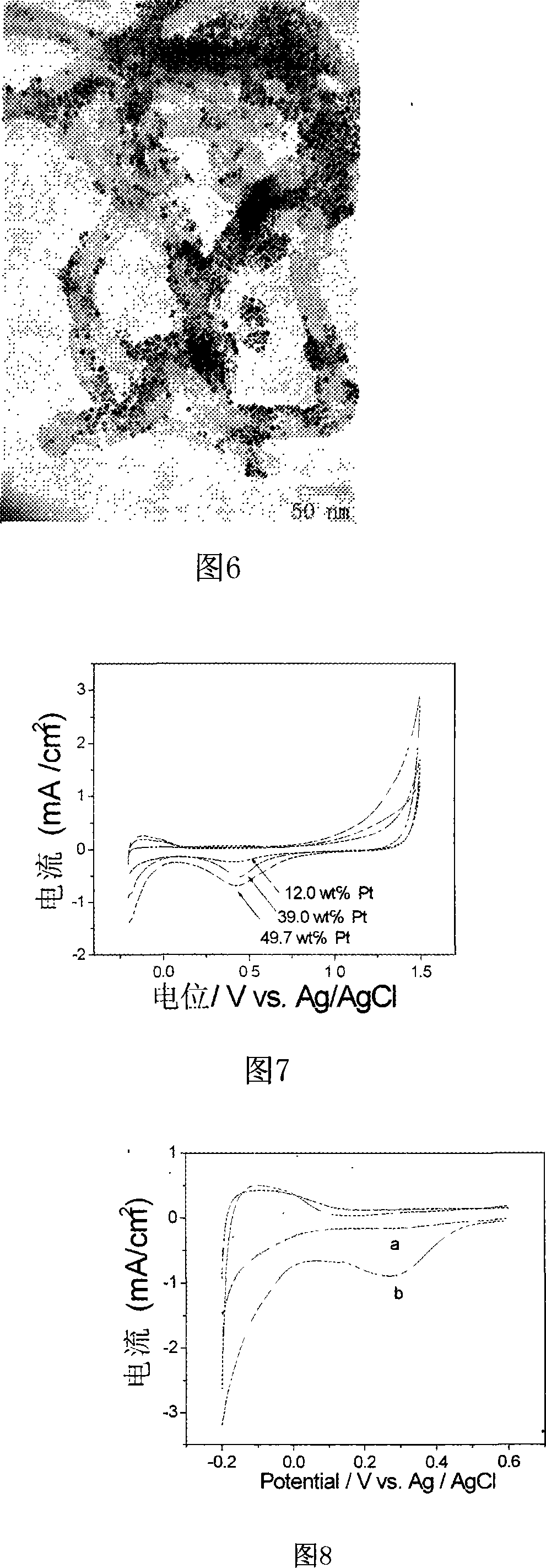Preparing method of nanometer particle carbon nanotube compound catalyst
A technology of carbon nanotubes and nanoparticles, which is applied in the field of preparation of nanoparticle carbon nanotube composite catalysts, can solve the problems of the difference between the amount of deposition and the theoretical value, and does not consider the shape and size of nanomaterial catalysts, etc. The effect of simple, good catalytic effect
- Summary
- Abstract
- Description
- Claims
- Application Information
AI Technical Summary
Problems solved by technology
Method used
Image
Examples
Embodiment 1
[0042] Step (1): in the three-necked bottle that reflux condensing device is housed, add carbon nanotube and nitric acid, the weight (g) of carbon nanotube: nitric acid volume (ml) ratio is 1: 10, and the concentration of nitric acid is 1M, Reflux at 80°C for 2 hours while stirring mechanically or magnetically for 2 hours. After the solution is cooled to room temperature, dilute with distilled water. The volume ratio of distilled water: nitric acid is 1:1, and let it stand until the carbon nanotubes are completely Precipitate, discard the supernatant, and filter the suspension of the lower layer with a nitrocellulose membrane with a pore size of 0.22 μm, wash with distilled water until the pH value of the dropped droplets is between 6 and 7 to obtain a black filter cake of carbon nanotubes, 60 °C in vacuum to obtain purified carbon nanotubes.
[0043] Step (2): The molecule used to prepare non-covalently modified carbon nanotubes with negative charges on the surface is prefera...
Embodiment 2
[0049] Step (1): in the three-necked bottle that reflux condensing device is housed, add carbon nanotube and nitric acid, the weight (g) of carbon nanotube: nitric acid volume (ml) ratio is 1: 50, and the concentration of nitric acid is 3M, Reflux at 100°C for 24 hours, while stirring mechanically or magnetically, the stirring time is 24 hours. After the solution is cooled to room temperature, dilute with distilled water. The volume ratio of distilled water: nitric acid is 1:5, and stand until the carbon nanotubes are completely Precipitate, discard the supernatant, and filter the suspension of the lower layer with a nitrocellulose membrane with a pore size of 0.22 μm, wash with distilled water until the pH value of the dropped droplets is between 6 and 7 to obtain a black filter cake of carbon nanotubes, 60 °C in vacuum to obtain purified carbon nanotubes.
[0050] The molecule used to prepare non-covalently modified carbon nanotubes with negative charges on the surface is pr...
Embodiment 3
[0056] In a three-necked bottle equipped with a reflux condensing device, add carbon nanotubes and nitric acid, the weight (g) of carbon nanotubes: the volume (ml) of nitric acid ratio is 1: 100, the concentration of nitric acid is 1M ~ 5M, at 120 ℃ Under reflux for 48 hours, mechanical stirring or magnetic stirring at the same time, the stirring time is 48 hours, the solution is cooled to room temperature, diluted with distilled water, the volume ratio of distilled water: nitric acid is 1: 10, let stand until the carbon nanotubes are completely precipitated, discard Remove the supernatant, and filter the suspension of the lower layer with a nitrocellulose membrane with a pore size of 0.22 μm, wash with distilled water until the pH value of the dripping droplets is between 6 and 7 to obtain a black filter cake of carbon nanotubes, vacuum at 60°C dried to obtain purified carbon nanotubes.
[0057] Step (2): The molecule used to prepare non-covalently modified carbon nanotubes w...
PUM
| Property | Measurement | Unit |
|---|---|---|
| pore size | aaaaa | aaaaa |
| size | aaaaa | aaaaa |
Abstract
Description
Claims
Application Information
 Login to View More
Login to View More - R&D
- Intellectual Property
- Life Sciences
- Materials
- Tech Scout
- Unparalleled Data Quality
- Higher Quality Content
- 60% Fewer Hallucinations
Browse by: Latest US Patents, China's latest patents, Technical Efficacy Thesaurus, Application Domain, Technology Topic, Popular Technical Reports.
© 2025 PatSnap. All rights reserved.Legal|Privacy policy|Modern Slavery Act Transparency Statement|Sitemap|About US| Contact US: help@patsnap.com



